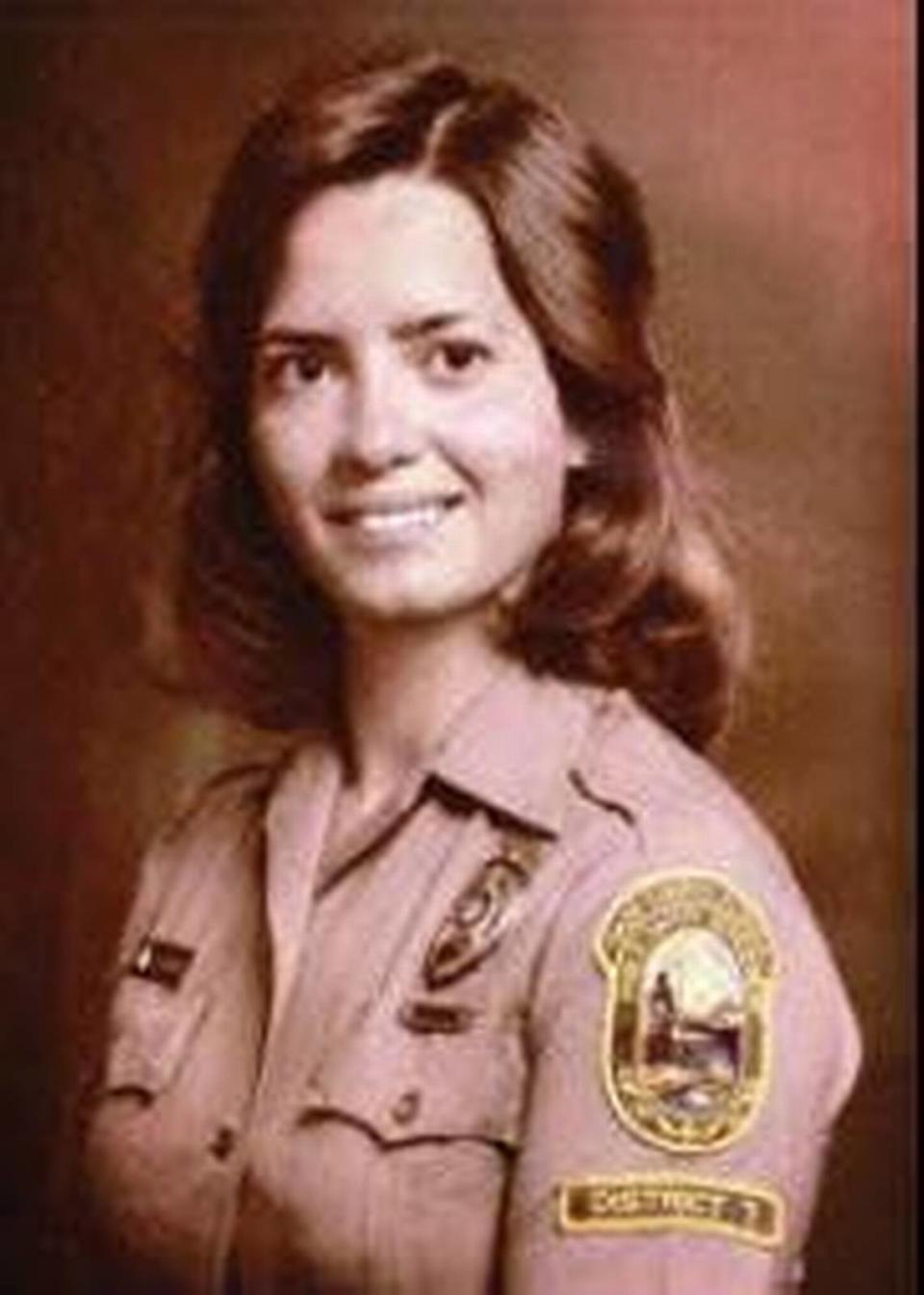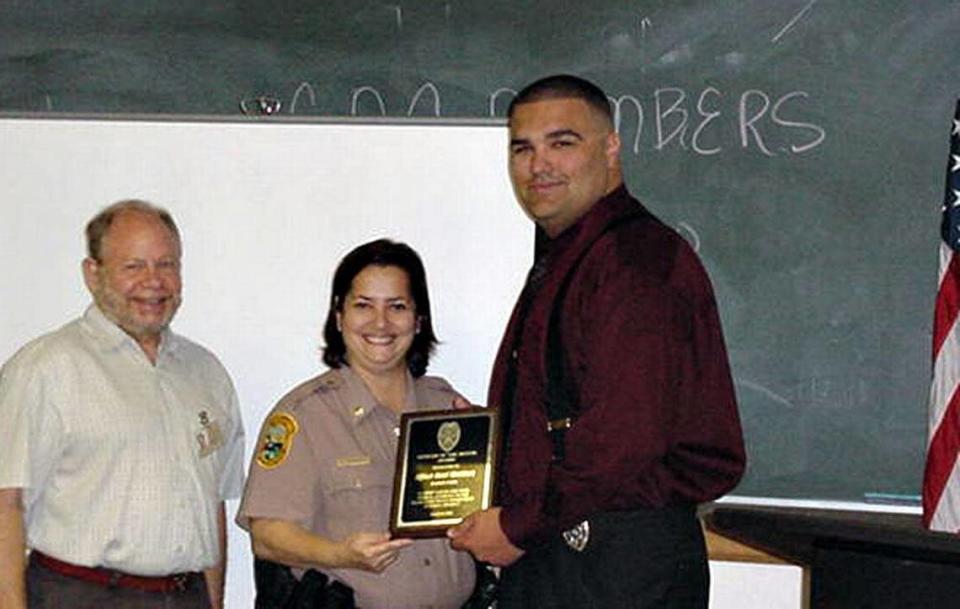In 1974, the first Cuban-American female cop patrolled Miami-Dade in a skirt and heels
In 1974, Gerald Ford had just replaced Richard Nixon as president. “All in the Family” was everyone’s favorite television show. And a pioneering Miami-Dade rookie police officer patrolled the streets in a skirt and heels.
The heels were at least low-rise but it was still a uniform that made it tough chasing bad guys, recalled Grace O’Donnell, then known as Grace Moreyra — who is credited with being the first Cuban-American woman to be sworn in as a police officer in the United States.
In South Florida, and the nation, few top cops are women. There’s a push to change that
Almost five decades later, Black and Hispanic female officers and commanders in South Florida are common — though not so much in the chief’s offices — and none of them are sporting uniform skirts.
“I think we’ve come a long way,” O’Donnell said. “But it’s like the rest of society as a whole. Look how many years it took to get a female vice president.”

Female officers, who make up just 12 percent of Florida’s sworn officers, still face challenges in many departments. But for ground-breakers like O’Donnell, there were constant indignities to remind them that many of their colleagues didn’t think they could measure up. Literally.
O’Donnell recalls that she and other female cops were given .38 revolvers with shorter barrels and fewer rounds then men — five-shot weapons with three inch barrels instead of the six-shot, four-inch-barrel service revolvers men got. They were perhaps slightly lighter but also less accurate. Almost a half-century later and well into her retirement, O’Donnell still isn’t sure why.
Acceptance from male partners was hard to come by for other reasons as well.
“You had guys riding with women whose wives weren’t very happy about it — and they’d tell you so,” said O’Donnell. She would later marry Miami-Dade Police Officer James O’Donnell and finish her 36-year career in 2010 as a major leading the agency’s Hammocks District.

It’s been an often difficult climb for female law enforcement officers since 1890, when the history books credit Marie Owens of Chicago with becoming the first woman to pierce the all-male police workforce. It would take another three decades before Myrtle Siler was named the first female sheriff in Chatham County, North Carolina.
But the true breakthrough came in 1972 when Congress amended the 1964 Civil Rights Act, which prohibited state and local agencies from job discrimination based on gender. That opened the door for more women to become cops and just over two decades later, in 1985, Penny Harrington in Portland, Oregon, became the first woman to run a major police department in the U.S.
Newspaper accounts at the time explain why women remained reluctant to join departments for so long. Harrington filed more than 40 sex discrimination complaints as she rose through the ranks. And when she finally did reach the top, a poll of the city’s sworn officers found that more than 90 percent of them disapproved of her performance.

In Florida, Sue Hogan of Minneola, just west of Orlando, became the state’s first female police chief in 1979. In 1994 Bonilyn Wilbanks-Free of Virginia Gardens was chosen as the first woman to lead a municipal police department in Miami-Dade. Then in 2002, after a rocky and brief nine-month stint as Miramar’s police chief, North Miami’s Gwendolyn Boyd became the first Black woman to be police chief in a Miami-Dade city.

By then, O’Donnell was well into her law enforcement career and running her own district. Looking back on her career, O’Donnell, who still volunteers at MDPD two days a week, recalls a time early on when she was in line to be a commanding officer but was denied the honor because she was a woman.
“My sergeant said ‘I’m not going to have an acting female sergeant.’ So I didn’t get to be acting sergeant. You just had to live with it. That’s the way it was back then,” said O’Donnell. “I had to chase down bad guys and jump fences in that skirt. Even our shoes had a little heel. In the beginning it was hard. You always just wanted to be accepted.”

 Yahoo Movies
Yahoo Movies 
